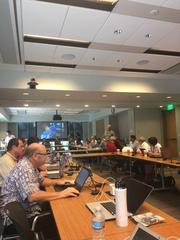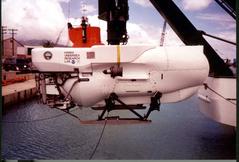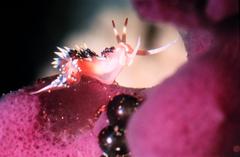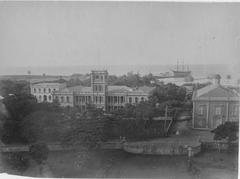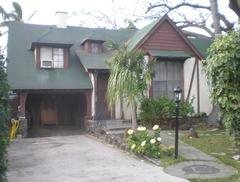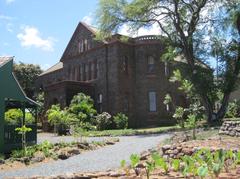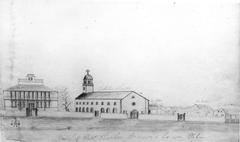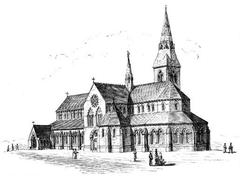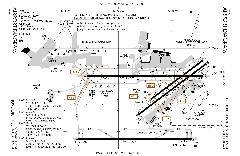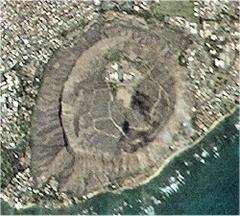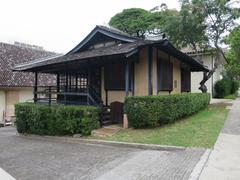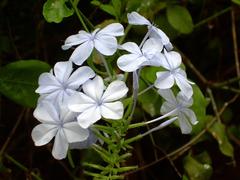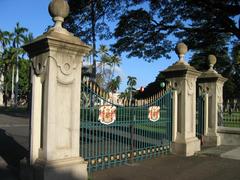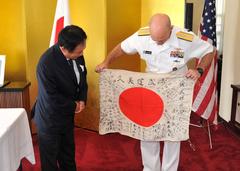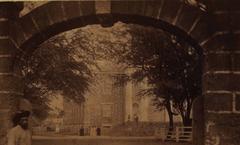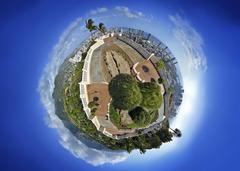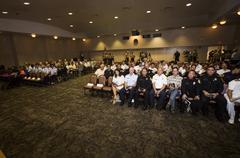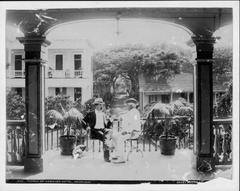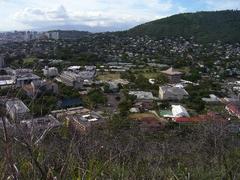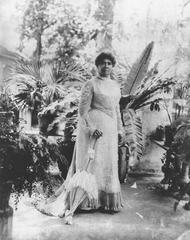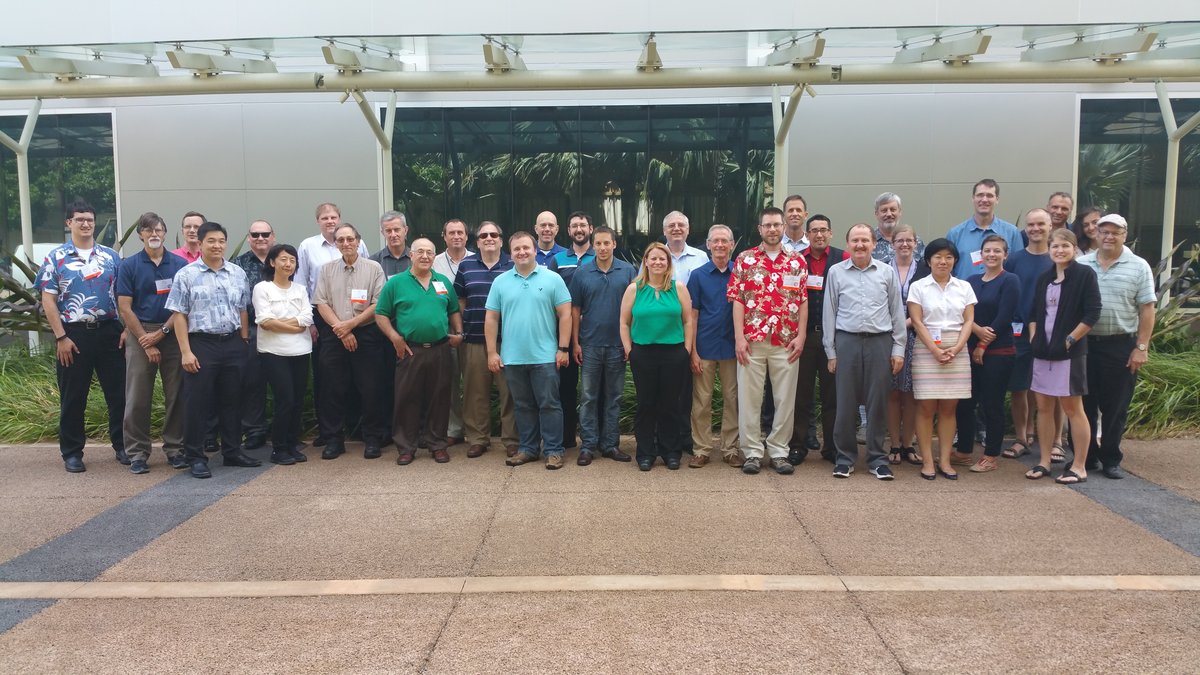
University of Hawaiʻi at Mānoa Visiting Hours, Tickets, and Historical Sites in Honolulu
Date: 14/06/2025
Introduction: History, Cultural Significance, and Visitor Experience
Nestled in the lush Mānoa Valley on Oʻahu, the University of Hawaiʻi at Mānoa (UH Mānoa) is a leading research university and a vibrant cultural hub in Honolulu. Established in 1907 under the Morrill Act, UH Mānoa evolved from a small college into an internationally recognized institution renowned for academic excellence, Native Hawaiian cultural heritage, and pioneering research. Today, it stands as a Hawaiian Place of Learning, deeply invested in the perpetuation of indigenous values and traditions (manoa.hawaii.edu/about/history/, facts.net).
UH Mānoa is uniquely designated as a land-grant, sea-grant, space-grant, and sun-grant university, reflecting its multifaceted research and community engagement initiatives (wikiwand.com). Visitors can immerse themselves in the university’s rich history, explore iconic architecture like Hawaiʻi Hall, and enjoy the campus’s expansive 320-acre arboretum. This guide offers comprehensive information on campus hours, tours, accessibility, travel tips, and nearby attractions such as Lyon Arboretum and Manoa Falls (manoa.hawaii.edu/about/visit/, campusvisitorguides.com).
Table of Contents
- Introduction
- Historical Overview
- Research Excellence and Unique Designations
- Cultural Significance and Hawaiian Identity
- Campus Landmarks and Visitor Highlights
- Visitor Information
- Photographic Spots
- Academic and Social Impact
- FAQ
- Conclusion and Call to Action
Historical Overview
Early Foundations and Territorial Era
The University of Hawaiʻi at Mānoa began in 1907 as the College of Agriculture and Mechanic Arts, founded by the Territorial Legislature under the Morrill Act (manoa.hawaii.edu/about/history/). Initially, classes took place near Thomas Square in downtown Honolulu, with only 10 students and 13 faculty members (hawaii.edu). In 1912, the college moved to Mānoa Valley and became the College of Hawaiʻi. The construction of Hawaiʻi Hall marked the beginning of the permanent campus, establishing an administrative and academic heart in Neo-Classical style (manoa.hawaii.edu/campus-environments/hawai%CA%BBi-hall/).
By 1920, the college had gained full university status, broadening its academic focus. The 1930s saw further growth, including the integration of teacher education programs (manoa.hawaii.edu/about/history/).
University Expansion and Modernization
After Hawaiʻi achieved statehood in 1959, UH Mānoa expanded rapidly. The University of Hawaiʻi System formed in 1965, integrating community colleges across the islands (en.wikipedia.org). The Mānoa campus officially received its current name in 1972, distinguishing it within the statewide system (manoa.hawaii.edu/about/history/).
Today, UH Mānoa enrolls over 18,000 students from over 100 countries, offering more than 200 degree programs (campusvisitorguides.com). Its alumni include influential figures like Patsy Mink and Robert Ballard.
Research Excellence and Unique Designations
UH Mānoa is classified as an “R1: Doctoral Universities – Very high research activity,” and is one of only three U.S. universities to hold land-grant, sea-grant, space-grant, and sun-grant designations (wikiwand.com). Its Applied Research Laboratory is a significant U.S. Navy research center.
The university’s location in the Pacific Ring of Fire and proximity to the ocean supports world-class research in marine biology, volcanology, and Hawaiian studies (facts.net).
Cultural Significance and Hawaiian Identity
UH Mānoa is committed to its role as a Hawaiian Place of Learning, with strong emphasis on Native Hawaiian values, language, and traditions (manoanow.org). The university actively engages the community through cultural festivals, service-learning, and sustainability efforts (facts.net).
Campus Landmarks and Visitor Highlights
- Hawaiʻi Hall: The campus’s oldest building, a Neo-Classical icon surrounded by royal palms (manoa.hawaii.edu/campus-environments/hawai%CA%BBi-hall/).
- Korean Studies Center: Traditional Korean architecture, reflecting UH Mānoa’s strength in Asian and Pacific studies (manoa.hawaii.edu/history/about/our-history/).
- East-West Center: Promotes international cooperation and features tranquil gardens and art (eastwestcenter.org).
- Hamilton Library: Hawaiʻi’s largest research library with extensive Asia-Pacific collections.
- Sinclair Library: Hub for music, media, and student activities.
Visitor Information
Visiting Hours and Tickets
- Campus Hours: Open daily from 6:00 AM to 10:00 PM.
- Admission: Free for campus grounds and most galleries/museums. Special events may require tickets (manoa.hawaii.edu/about/visit/).
- Art Galleries: Open weekdays 10:00 AM–4:00 PM, Sundays 12:00 PM–4:00 PM.
Guided Tours and Special Events
- Guided Tours: Year-round, by reservation; free but fill quickly (manoa.hawaii.edu/admissions/visit/).
- Self-Guided Tours: Downloadable guides and audio tours are available (campusvisitorguides.com/uhm/self-guided-tour/).
- Virtual Tours: Interactive experiences accessible online.
Accessibility and Transportation
- Accessibility: Most buildings are wheelchair accessible. Resources are available in multiple languages (hawaii.edu/news/2025/01/10/new-app-replaces-pay-stations).
- Parking: Visitor parking in green stalls; payments via JustPark app (hawaii.edu/news/2025/01/10/new-app-replaces-pay-stations).
- Public Transit: TheBus serves the campus with stops at Sinclair Circle.
- Biking and Walking: Bike racks available; campus is pedestrian-friendly.
Nearby Attractions
- Lyon Arboretum and Manoa Falls offer scenic outdoor experiences.
- Downtown Honolulu: Includes ʻIolani Palace, Bishop Museum, and Honolulu Museum of Art (honoluluhistoricalsites.com).
Photographic Spots
- Varney Circle: Iconic entrance framed by royal palms.
- Hawaiʻi Hall: Neo-Classical façade and lush gardens.
- Campus Gardens and Arboretum: Vibrant tropical scenery year-round.
- East-West Center: Tranquil gardens and reflecting pools.
Academic and Social Impact
UH Mānoa is a national leader in minority graduate degrees and is renowned for its programs in environmental law, ocean and earth sciences, and Asian and Pacific studies (campusvisitorguides.com). The campus is a hub for public lectures, art exhibitions, and cultural festivals.
Frequently Asked Questions (FAQ)
Q: What are the campus visiting hours?
A: 6:00 AM to 10:00 PM daily.
Q: Is there an entrance fee?
A: No; admission to campus grounds and most galleries is free.
Q: How do I pay for parking?
A: Use the JustPark app for green visitor stalls.
Q: Are guided tours available?
A: Yes, by advance reservation; self-guided and virtual tours are also offered.
Q: Is the campus accessible?
A: Yes, with ramps, accessible pathways, and multi-language resources.
Q: What should I wear?
A: Lightweight, breathable clothes and a rain jacket, as Mānoa Valley has frequent showers.
Tips for a Memorable Visit
- Reserve tours early and arrive early for parking.
- Use refill stations to stay hydrated.
- Respect cultural protocols, especially at sacred sites.
- Explore nearby historical sites for a full cultural experience.
Contact Information
- Campus Visit Line: +1 (808) 956-7137
- Email: [email protected]
- Visitor Information: manoa.hawaii.edu/admissions/visit
Conclusion and Call to Action
The University of Hawaiʻi at Mānoa offers a rich blend of history, culture, and natural beauty. With its open access, inclusive programming, and commitment to community engagement, UH Mānoa is an essential destination for visitors to Honolulu. Plan your visit by reserving a tour, downloading the JustPark app for parking, and exploring the campus’s many events and attractions. Stay updated by following UH Mānoa’s official social media and related resources.
Recommended Visuals:
- High-resolution images of Varney Circle and campus entrance
- Art Gallery interior photos
- Campus map graphic
- JustPark app promotional banner
- Virtual tour preview image
Internal Links:
Key Takeaways & Final Recommendations
The University of Hawaiʻi at Mānoa provides an enriching visitor experience, blending academic prestige, cultural significance, and the natural beauty of Mānoa Valley (manoa.hawaii.edu/about/history/, wikiwand.com). Free daily access, robust accessibility, guided tours, and rich engagement with Native Hawaiian heritage make it an ideal destination for tourists and scholars. Use the Audiala app for enhanced touring, and check the official university website for the latest updates (manoa.hawaii.edu/admissions/visit/, campusvisitorguides.com).
References
- University of Hawaiʻi at Mānoa History (manoa.hawaii.edu/about/history/)
- University of Hawaiʻi at Mānoa Campus Environments (manoa.hawaii.edu/campus-environments/hawai%CA%BBi-hall/)
- University of Hawaiʻi System Overview (en.wikipedia.org)
- University of Hawaiʻi at Mānoa Research and Designations (wikiwand.com)
- University of Hawaiʻi at Mānoa Facts and Visitor Highlights (facts.net)
- Revisiting Origins: The University of Hawaiʻi at Mānoa (manoanow.org)
- UH Mānoa Visitor Information (manoa.hawaii.edu/admissions/visit/)
- University of Hawaiʻi at Mānoa Fast Facts (campusvisitorguides.com)

